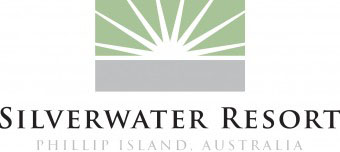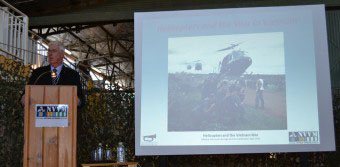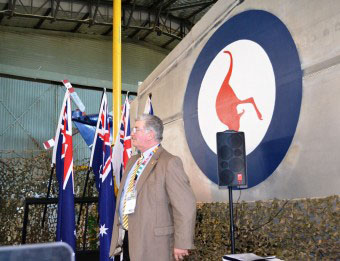The war in Vietnam has left indelible impressions upon our society. One of the great icons from that decade-long conflict was the helicopter. It was the first time that helicopters were used extensively in a war and as the war progressed the roles employed by helicopters expanded dramatically. Whether operating as slicks (troop carriers), gunships, medevac, heavy lift, observation or aerial trucks, ‘choppers’ became the ubiquitous symbol of the war in Vietnam – and essential for the conduct of the war. No-one who served in Vietnam left without some experience of helicopters, directly or indirectly.
For the Australian and New Zealand forces, whether operating in concert with the American, South Vietnamese or other Allies, or alone, helicopters were essential to their operations. Some support was provided by Australian and New Zealand Air Force and Army helicopters, much by the Americans. Similarly, Australian Navy personnel flew in American Army combat units. Helicopters were common but never taken for granted. Australian pilots and crew were killed and wounded in action and accidents, while many were awarded decorations for bravery and valour.
What Australian helicopter units served in Vietnam and what were their stories? How did the Australian and New Zealand air and ground crew and performance compare to others? How did they adapt to new helicopter types and tactics? How did helicopters help or hinder our operations in Vietnam? What was the impact on casualty evacuation and survival rates for wounded? What did we learn from the helicopter experience? This fully catered conference, in the superb setting of the NVVM and under the wings of a Canberra bomber, was a must-go event for Vietnam veterans, historians and those who want to learn more about the helicopter experience in Vietnam.
Military History and Heritage Victoria Inc.’s one day Conference held on 20 April 2013 – in partnership with MHHV member the National Vietnam Veterans Museum at Phillip Island – brought together a wide range of speakers and diverse views of Australia’s helicopter war in Vietnam.
Choppers: Helicopters and the Vietnam War examined the role of helicopters in the Vietnam War (1962-1975), from the strategic level to the level of the men who flew them, maintained them and flew in them. Speakers included RAN pilots flying with US helicopter combat companies, Army, RAAF and RNZAF logisticians and strategists examining how the helicopter affected the way war was fought, and infantrymen who flew in them on the sharp end of patrol and combat insertions and extractions. The final speaker described the post-war recovery of two Australian MIAs, both missing after helicopter actions.
Colonel Marcus Fielding, MHHV president, said: “This conference was another highly successful collaboration with a member partner – NVVM – and everyone involved felt that they left the conference much better acquainted not just with how the helicopter had changed the way Australian forces operated but also the limitations imposed on RAAF helicopter operations due to aircraft serviceability requirements and to some extent by early operational restrictions which soon disappeared in the light of on the ground experience.”
National Vietnam Veteran Museum President Gary Parker said, “This is the first on what we expect will become an annual military history and heritage conference at the Museum as we begin an exciting rejuvenation of NVVM this year and beyond. With Marcus, I look forward to welcoming you to our Museum and to the ‘Choppers’ Conference.”
The distinguished historian Professor Peter Edwards AM, PhD, FAIIA opened the military history conference Choppers: Helicopters and the Vietnam War, which will be held at the National Vietnam Veterans Museum on Phillip Island on Saturday 20 April. Military History and Heritage Victoria (MHHV) President, Marcus Fielding, said “Not only is he a distinguished historian in his own right, but was the Official Historian of Australia’s involvement in Southeast Asian conflicts 1948-75 (Malaya, Borneo and Vietnam). As such he will be able to place the subject of this conference exactly within both the broader and specific context of the Vietnam era.” The keynote speaker was Air Vice Marshal Bob Treloar AO (RAAF Rtd).
Our conference convenor, Andrew Kilsby, combined with the NVVM volunteer team to prepare and run the conference, set in the Museum against the backdrop of a Canberra bomber restoration and the magnificent NVVM collection. Of particular interest to delegates were a Huey, Cobra, Wessex and Sioux helicopters in the NVVM collection.
Choppers: Helicopters and the Vietnam War saw 65 in attendance, including veterans, historians, researchers and post-graduate students. Proceedings will be published later this year.
Download a copy of the Conference Programme by clicking here
Conference Programme
Saturday 20 April 2013
Session One
Welcome – Major-General Jim Barry, AM MBE RFD ED (Rtd) MHHV Inc. Patron
Opening of the Conference – Colonel Marcus Fielding MHHV Inc. President and Conference Chair
Keynote Speaker
Paper: Helicopters and the War in Vietnam – Air Vice Marshal Bob Treloar, AO (RAAF Rtd)
Session Two
Session Chair: Colonel Ken Anderson, AM (Rtd) NVVM Historian
Paper: New Zealand’s Helicopter War – Air Vice Marshal Robin Klitscher, CBE DFC AFC (RNZAF Rtd)
Paper: A Bloody Job Well Done: the RAN and Combat Assault in the US Army – Commander Max Speedy, DSC, RANR
Session Three
Session Chair: Mr John Methven OAM Chairman, NVVM Board of Trustees
Paper: 9 Squadron in Vietnam – Wing Commander Nick Leray-Meyer, AM RAAF
Paper: Huey Support in Vietnam – Air Vice Marshal Mac Weller AM (RAAF Rtd)
Session Four
Session Chair: Mr Gary Parker President, NVVM
Paper: Helicopters and the Vietnam War- A Soldier’s Perspective Major George Logan, RFD Vice-President RSL Victoria
Close of Day
Colonel Marcus Fielding, President MHHV Conference Chair
For speakers and delegates and their partners and families who attended the Choppers: Helicopters and the Vietnam War weekend of activities, an accommodation package was created with the superb Silverwater Resort

The semi-formal dinner was held in the same superb location as the one day conference, under the wings of the Canberra bomber under restoration at the Museum, and surrounded by the first-class exhibits. MC for the dinner was Colonel Marcus Fielding, President of MHHV. The dinner consisted of a three course meal and all drinks provided by Spice Island http://www.spiceisland.com.au/si/
Click here and here to see more photos of the conference and the museum open day.

Contact Military History and Heritage Victoria about this article.










